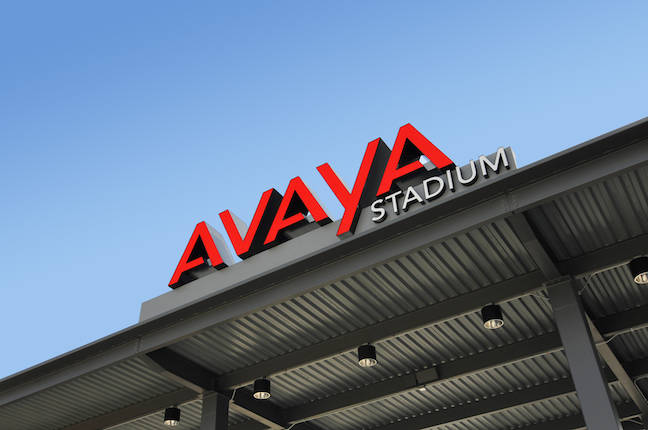The part of the website that the user can interact with is called the front end or client side of the website. Every website needs a backend or server side to store and manage its internal data. So is React.js frontend or backend?
React.js is a frontend library that is used with a backend. The end user of the website does not have direct access to the backend. But which backend for React should you choose?
There are a lot of backend options available in the market. How would you know if your chosen backend is the right one?
In this article, you will learn how to choose the best backend for React websites in the easiest and cheapest way. Let us dive in!
Want the best way to build amazing React apps? Check out React.js course.
What is React?
React is one of the most popular frontend JavaScript libraries for building user interfaces. React can also be rendered on the server using Node.js and run mobile apps using React Native.
React. was developed and used by Facebook developers to implement functionalities such as news feed. In 2013, the company decided to make React open-source so that everyone should be able to utilize the power of React. React is a client-side framework that utilizes a one-page user interface. Atlassian, Netflix, Dropbox, and Codecademy are the famous platforms that are making use of React to deal with their client-sided tasks.
React makes it painless to create interactive UIs. By designing a simple view for each state of your application, React efficiently updates and renders the appropriate components as your data changes. Your code becomes more predictable and easier to debug with declarative views. You can create encapsulated components that manage state and assemble them to create complex user interfaces. The component logic is written in JavaScript rather than a template, so you can easily route rich data through your app and exclude states from the DOM.
The Programmers, who were facing similar issues as Facebook, started taking interest in this JavaScript library. Soon enough, React became extremely popular, and nowadays, it is one of the most used technologies for user interface development. The main advantage of using React is to ensure project flexibility and excellent performance. React can also be applied to different types of applications. This JavaScript-based technology is suitable for projects where the user interface plays an important role.
Get to know more about ReactJS vs React Native.
What Is the Need for the Best Backend for React Applications?
Backend development contains behind-the-scenes activities that occur during user interaction. It focuses on the server-side of the website (databases, scripting, website architecture). The backend developers write programs that communicate the database information to the browser. For example, You go on Amazon and search for a new shirt. A Back End dev uses server-side language to pull all the information about shirts from a database. This information is processed in an application and returned to the user through the Front End language.
In every React project, we manage data on the client through state and user interactions. However, many apps require data that comes from a database. The backend is responsible for getting and updating data behind the scenes. Let’s see some major use cases where the best backend for React is required:
- For server-side rendering, to prevent the crawling of the search engine.
- When your app requires open socket communication to support real-time events.
- When you need a database that meets the exact needs of your requirements and services.
There are several reasons why you need the best backend for React applications. Creating an IT solution for business is a complex process and choosing the right tech stack is crucial for assuring the success of your IT undertaking. As there are many options, you should carefully consider your needs and expectations and define your project requirements. If you need help in understanding how to connect React with the backend, check out the best web development training institute.
Best 10 Backend for React.js
So, let’s start the collection of React.js backend frameworks in 2022.
1. Node.js
Node.js is an open-source, cross-platform back-end JavaScript runtime environment that runs on the V8 engine and runs JavaScript code outside of a web browser.
Features
Scalable- NodeJS has several built-in features that make it a powerful tool to handle any number of users and queries.
Faster code execution- As Node.js uses the V8 JavaScript Runtime motor, the preparation of requests inside Node.js becomes fast, which makes the runtime motor faster.
Flexible- It has many built-in APIs that allow for a vast number of functionalities.
Cross-platform compatibility- Node.js is compatible with multiple platforms such as Unix, Linux, Windows, and mobile platforms.
2. Express.js
Express is a minimal and flexible Node.js web application framework that provides a robust feature set for web and mobile applications.
Features
APIs- With countless HTTP utility methods and middleware at your disposal, creating a robust API is quick and easy.
Performance- Express provides a thin layer of fundamental web application features without obscuring known Node.js features.
Frameworks- Many popular frameworks use Express.
Web Apps- Express is a minimal and flexible Node.js web application framework that provides a robust feature set for web and mobile applications.
3. Firebase
Firebase is an app development platform that helps you build and grow apps and games users love. Backed by Google and trusted by millions of businesses around the world.
Features
Real-time- The nature of Firebase is consistently updating. Firebase easily supports multiple users being on the application.
Cloud Messaging- This platform allows us to deliver and receive messages more effectively.
Hosting- Firebase provides the hosting of applications with speed and security. It can host Static or Dynamic websites and microservices. It has the capability of hosting an application with a single command.
Authentication- Firebase Authentication service provides easy-to-use UI libraries and SDKs to authenticate users to your app. It reduces the effort required to develop and maintain the user authentication service. It also handles tasks such as merging accounts, but it can be busy if done manually.
4. Prisma
It’s the next generation Node.js and Typescript ORM for Databases
Features
Hassle-free migrations- Prisma Migrate automatically generates a fully customizable SQL database migration so you can make changes to your database without generating a migration file.
Make fewer errors with a type-safe client- The Prisma Client is a query builder that builds queries the way you want and is automatically generated from the type of Prisma schema that suits your application.
Scale your database connections- The Prisma Data Proxy provides database connection management and pooling. Set up a data proxy in minutes to grow your serverless application while maintaining predictable database performance.
Collaborate safely with your team- Invite your colleagues and collaborate with appropriate permissions. Manage and verify your application data in the cloud with the Data Browser. Then test and troubleshoot Prisma queries directly from your browser using the Query Console.
5. Heroku
It is a cloud platform service that supports multiple programming languages. One of the first cloud platforms, it has been in development since June 2007, when it supported only the Ruby programming language, but now supports Java, Node.js, Scala, Clojure, Python, PHP, and Go.
Features
Scale- Heroku scales instantly both vertically and horizontally. From small hobby projects to enterprise-level e-commerce to handle Black Friday spikes, you can do everything elegantly.
Heroku Runtime- The app runs in a smart container in a fully managed runtime environment. It covers everything important in a production environment, including configuration, orchestration, load balancing, failover, logging, and security.
Heroku Postgres (SQL)- Reliable and secure PostgreSQL as Service with easy setup, encryption on saving, easy scaling, database forks, continuous protection, and more.
Add-ons- Extend, extend, and manage your applications with pre-integrated services such as New Relic, MongoDB, SendGrid, Searchify, Fastly, Papertrail, Clear DB MySQL, and Treasure Data.
6. Strapi
Strapi is the leading open-source headless CMS. It’s 100% JavaScript, fully customizable, and developer first.
Features
Customizable- Easily customize the admin panel as well as the API. Extend your content management with custom plugins, in seconds.
RESTful- Consume the API from any client (React, Vue, Angular), mobile apps, or even IoT devices, using REST or GraphQL.
Open Source Forever- The entire codebase is available on GitHub and maintained by hundreds of contributors.
Self-hosted- Don’t give up on your privacy or lock yourself in. Keep control of your data and your costs at all times.
7. Gatsby
Gatsby is a React-based open source framework with performance, scalability, and built-in security.
Features
Performance- Gatsby automates code splitting, image optimization, lazy-loading, prefetching resources, and more to ensure your site is fully optimized. No manual tuning is required.
Scalability- Gatsby sites do not require complex scaling operations or expensive hosting. They scale when needed, but when traffic drops, so do your usage and your cost. Host at scale for pennies.
Accessibility- Recognized by WebAIM as the most accessible web framework, we build in best practices like accessible routing, progressive page enhancement, and a built-in linting tool to find accessibility errors. Helps make the web work for everyone.
Secure- Gatsby’s serverless rendering generates static HTML at build time. The lack of a server or accessible database means the absence of malicious requests, DDOS attacks, or accidental disclosures. There is no attack surface on the Gatsby site.
8. Django
Django is an open-source, Python-based web framework that follows the model–template–views architectural pattern, maintained by the Django Software Foundation, an independent organization established in the US as a 501 non-profit.
Features
Ridiculously fast- Django helps developers get their applications running from concept to completion as quickly as possible.
Secure- Django helps developers by avoiding many common security problems.
Exceedingly scalable- Some of the busiest websites on the web take advantage of Django’s fast and flexible extensions.
Fully loaded- Django includes dozens of extras you can use to handle web development tasks. Django takes care of user authentication, content administration, site maps, RSS feeds, and more out-of-the-box tasks.
9. Digital Ocean
Digital Ocean, Inc. is an American cloud infrastructure provider headquartered in New York City with a global data center. Digital Ocean provides a cloud infrastructure for developers, start-ups, and SMEs as a service platform.
Features
Kubernetes- An easy-to-use managed Kubernetes service that provides uptime, scalability, and portability for cloud-native applications.
Droplets- On-demand Linux virtual machines. Choose from a variable amount of RAM, locally attached SSD storage, and a shared CPU and dedicated CPU plan with sufficient transfer quotas.
App Platform- Quickly build, deploy, and scale your apps with a simple, fully managed solution. It handles infrastructure, app runtime, and dependencies, so you can focus on your code.
On-Demand Functions- Digital Ocean Functions is a serverless computing solution that runs on-demand, enabling you to focus on your code, scale instantly with confidence, and save costs by eliminating the need to maintain servers.
10. Ruby
Ruby on Rails, or Rails, is a server-side web application framework written in Ruby under the MIT License. Rails is a model–view–controller framework, that provides default structures for a database, a web service, and web pages.
Features
Action Dispatch route URLs- Configure how URLs connect to the controllers using the routing domain language. The route exposes a bundle of actions that belong together as a resource: index, view, new, create, edit, update, destroy.
Action Views mix Ruby and HTML- Templates can use the versatility of Ruby, excessive code is extracted into helpers, and the domain model is used directly and interwoven with the HTML.
Action Controllers handle all requests- Controllers expose the domain model to the web, process incoming parameters, set caching headers, and render templates, responding with either HTML or JSON.
Active Records make modeling easy- Databases come to life with business logic encapsulated in rich objects. It models associations between tables, provides callbacks on save, seamlessly encrypts sensitive data, and beautifully represents SQL queries.
Conclusion
We have covered the best backend for React in this blog. Each comes with some pros and cons. To select the backend, first, prioritize your requirements and then choose accordingly.
React is one of the leading front-end frameworks for developing React applications. However, if you’re looking for an app that meets your specific needs, you need a back end with React. You can add tons of desired functionality to your application with the backend. Using these backend frameworks with React, you can develop responsive web apps. If you are looking for the complete guide to building your own production-ready React projects, check out React.js course at KnowledgeHut.
Frequently Asked Questions (FAQs)
1. Which backend is best for React.js?
Each framework offers unique and useful features. To select the right backend, first, prioritize your requirements and then choose accordingly. We recommend using Express Js with NodeJS as they have proven to be the best and most appropriate backend framework for React. Although, it varies from user to user.
2. Does React need a backend?
All React projects manage data on clients through state-user interactions. However, many apps require data that comes from a database.
3. Can we do backend with React?
No. React is a front-end JavaScript library. React is capable of making API calls (sending the request to the backend), which deal with the data. React cannot process the database or the data source itself.




















Discussion about this post